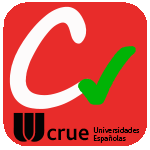Title
Current References Limitation Method Considering Voltage and Current Maximums for STATCOMs Providing Simultaneously Reactive Power and Current HarmonicsAuthor (from another institution)
Publication Date
2022Other institutions
Ingeteam (Spain)Version
PostprintDocument type
Journal ArticleJournal ArticleLanguage
engRights
© 2022, IEEEAccess
Open accessPublisher’s version
https://doi.org/10.1109/JESTPE.2022.3146203Published at
IEEE Journal of Emerging and Selected Topics in Power Electronics Vol. 10. N. 2. Pp. 2559-2575, 2022xmlui.dri2xhtml.METS-1.0.item-publicationfirstpage
2559xmlui.dri2xhtml.METS-1.0.item-publicationlastpage
2575Publisher
IEEEKeywords
Automatic voltage control
Harmonic analysis
Reactive power
Power harmonic filters ... [+]
Harmonic analysis
Reactive power
Power harmonic filters ... [+]
Automatic voltage control
Harmonic analysis
Reactive power
Power harmonic filters
Power electronics
Active filters
Limiting
Current harmonic control
Current loops
Static synchronous compensator (STATCOM)
Voltage and current maximums [-]
Harmonic analysis
Reactive power
Power harmonic filters
Power electronics
Active filters
Limiting
Current harmonic control
Current loops
Static synchronous compensator (STATCOM)
Voltage and current maximums [-]
Abstract
This article focuses the analysis on a static synchronous compensator (STATCOM) that operates simultaneously providing reactive power and several current harmonics of different frequencies (active pow ... [+]
This article focuses the analysis on a static synchronous compensator (STATCOM) that operates simultaneously providing reactive power and several current harmonics of different frequencies (active power filter or active impedance functionalities). Being more specific, this article proposes a general limitation method that reduces the current references of the STATCOM whenever the current or voltage limit of the converter is exceeded. In a realistic operation scenario, the STATCOM’s operator may ask for certain reactive power and harmonic current reference signals, and depending on the actual grid voltage conditions (unbalances and harmonics), the required converter voltage and current may exceed their limit. Consequently, the proposed limitation method protects the STATCOM system from malfunctioning when the voltage limit is exceeded and from damages when the current limit is exceeded. Hence, this article first proposes a limitation method oriented to a STATCOM that operates solely exchanging reactive power. Second, the limitation method is generalized for a STATCOM that controls reactive power as well as several current harmonics. Then, simulation and experimental results are provided to validate the proposed limitation method, under a rich variety of working conditions. Finally, a conceptual analysis of the method is carried out confronting it against several possible limitation alternatives. [-]
xmlui.dri2xhtml.METS-1.0.item-sponsorship
Gobierno de Españaxmlui.dri2xhtml.METS-1.0.item-projectID
info:eu-repo/grantAgreement/GE/Convocatoria MISIONES CDTI/MIG-20201002/ES/Nuevo Sistema energético 100% flexible y robusto para la integración de nuevas tecnologías en generación, redes y demanda/FLEXENERCollections
- Articles - Engineering [756]
Related items
Showing items related by title, author, creator and subject.
-
The CEL Method as an Alternative to the Current Modelling Approaches for Ti6Al4V Orthogonal Cutting Simulation
ARRAZOLA, PEDRO JOSE; Madariaga, Aitor (Elsevier B.V., 2017)The finite element approach is often adopted to study the machining process. The Lagrangian and Eulerian formulations or even Arbitrary Eulerian-Lagrangian (ALE), one of their combinations, are the most employed in the ... -
Towards Large-Scale, Heterogeneous Anomaly Detection Systems in Industrial Networks: A Survey of Current Trends
Iturbe, Mikel; Garitano, Iñaki; Zurutuza, Urko; Uribeetxeberria, Roberto (The Wiley Hindawi Partnership, 2017)Industrial Networks (INs) are widespread environments where heterogeneous devices collaborate to control and monitor physical processes. Some of the controlled processes belong to Critical Infrastructures (CIs), and, as ... -
The influence of adapted interactive environments in current industrial interfaces aceptance
Mazmela Etxabe, Maitane; Lasa, Ganix; Aranburu, Erik; Gonzalez Ochoantesana, Itsaso; Val, Ester (AEIPRO, 2018)User experience is a growing field of research, which in recent years has gained considerable interest. During the last two decades, various models have been proposed to understand why users accept technologies ...





















